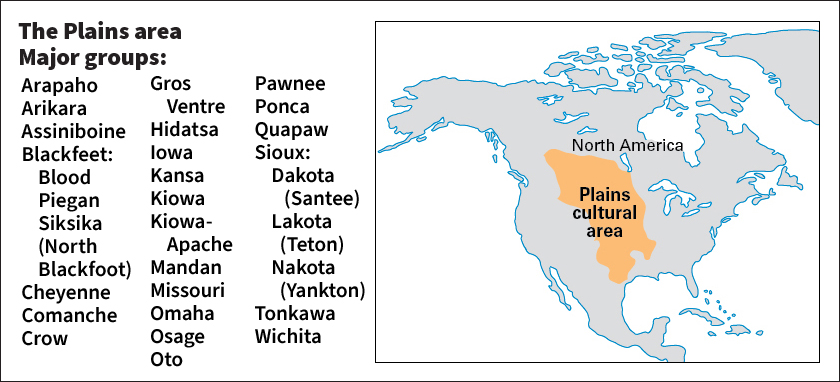Blackfeet are a Native American people of the Great Plains of Montana and Alberta. In Canada, they are recognized as a First Nations people. The group, known as the Blackfoot Confederacy, consists of the Piikani, Kainah (also called Blood), and North Blackfoot in Canada and the Pikuni in the United States. The Blackfeet speak a language in the Algonquian language family.

Before Europeans arrived, the Blackfeet lived in small bands of 50 to 100 people. They hunted mainly buffalo but also deer, elk, and antelope. They also gathered wild plants for food. They lived in cone-shaped tipi lodges built of buffalo hides stretched over a frame of poles. Each lodge housed 10 to 15 members of a family. Bands were led by one or two headmen, who earned their position through leadership ability, hunting skill, and ceremonial activities.
In the early 1800’s, American fur trappers began to enter the Blackfeet hunting grounds. Within a few decades, the newcomers established a series of trading posts and forts. Many Blackfeet grew to depend on new trade goods, such as metal pots, knives, axes, and cloth. A smallpox epidemic in the 1830’s severely reduced the Blackfeet population. In 1855, the Blackfeet signed a treaty with the United States government that set aside land for them. By the 1880’s, white American hunters had slaughtered millions of buffalo, depriving the Blackfeet of their main source of food. Other conflicts led to many Blackfeet deaths and the loss of traditional lands.

Today, there are tens of thousands of Blackfeet in the United States and Canada. More than half of them live on a reservation in Montana and on three Canadian reserves. Many others live in urban areas. Tourism has become increasingly important to the economy of Blackfeet communities.
